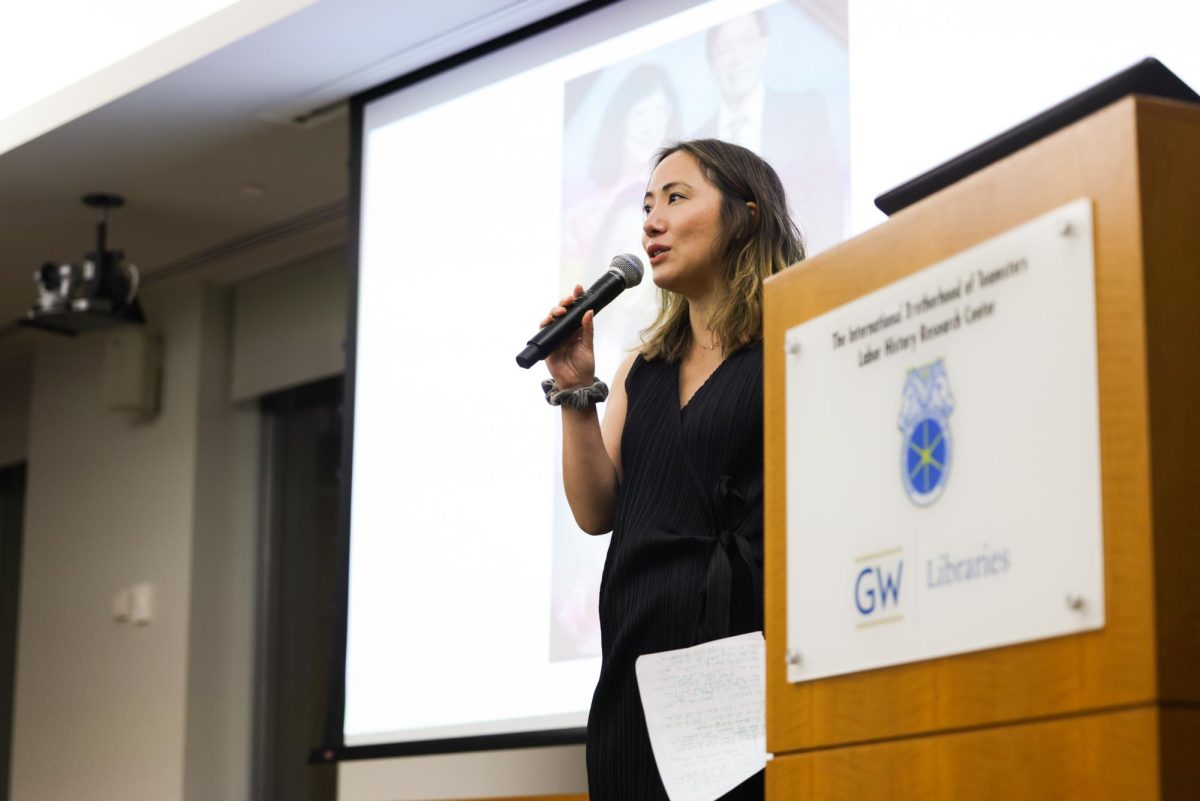An empty bowl has more significance for a D.C. dance company than the meal.
Dana Tai Soon Burgess uses the circular dish to convey the emotional separation, adoption and growth of his lead performer in the recent dance production, “Becoming American.”
Premiering this past weekend, the show took place Dance Place in Northeast D.C. and focused on the personal story of Katia Chupashko, lead dancer and alumna. Depicting her adoption from Korea into a white American family, the show focuses on the difficulties of growing up and her feelings of not belonging.
Her upbringing in a small town in New Jersey with a low diversity rate made growing up a struggle for Chupashko. While many children wanted to stand out, Chupashko wanted nothing more than the blonde hair and blue eyes that would allow her to fit in.
Burgess, an associate professor and chair of the theater and dance department at GW, owns the show’s dance company and also choreographed the show.
Burgess said that the goal of his shows is “to take a personal story and explain it so the audience can understand the universality of it.”
The intention was to use the movement of the show to convey the overarching emotions of isolation that Chupashko suffered. He focused on the power of upraised arms and gestures to depict her emotional struggle. Combining elements of contemporary dance, ballet and martial arts, he produced concise and poignant movements.
Burgess described his process in choosing choreography as “finding a writing style for each work.”
Dancer Sarah Halzack has worked with Burgess for nine years, both at GW and as a member of his dance company.
“We know his style,” Halzack said. “Generally all the steps are in the Dana-verse.”
Beyond the simplicity of the choreography, Burgess incorporates other elements into his shows to add depth and information. Most shows include some form of multimedia presentation, involving projections on the show’s backdrop.
In “Becoming American,” Burgess also used cloaked figures to represent the internal emotions that Chupashko was struggling with. During the performance, these figures would move objects and dance with Chupashko as she struggled to adapt.
The central image of the show is an empty bowl. This bowl is given to Chupashko along with her luggage by a cloaked figure at the beginning of the show and follows her through to the end.
“The bowl is a symbolic vessel that represented Korean culture or just my past, and trying to figure out a way to fill it in a way that was ‘me.’ Not anything that was my environment or feel that I should be because of the way I looked,” Chupashko said.
Chupashko said dancing to represent the troublesome emotions from her youth was offputting at first. When the production began, Burgess said his intention for the show was to contain small fragments of many separate dancer stories. Instead, Burgess focused in on Chupashko’s own history, drawn in by the strength of her story.
“He wasn’t trying to edit or push in any direction, he just let it evolve,” Chupashko said.
While rehearsing, Chupashko described practicing her ability to stay present but also detached from the emotions she was reliving.
It wasn’t until the week before the show, when performing for a few people and seeing them getting emotional at the end, that she realized her story’s impact.
“It’s not the story line of being adopted, but what happens after. I’m sharing an emotion that I think most people have experienced in some way,” Chupashko said.
“Becoming American” will be shown at the Marvin Center April 6 and 7 before going overseas.





